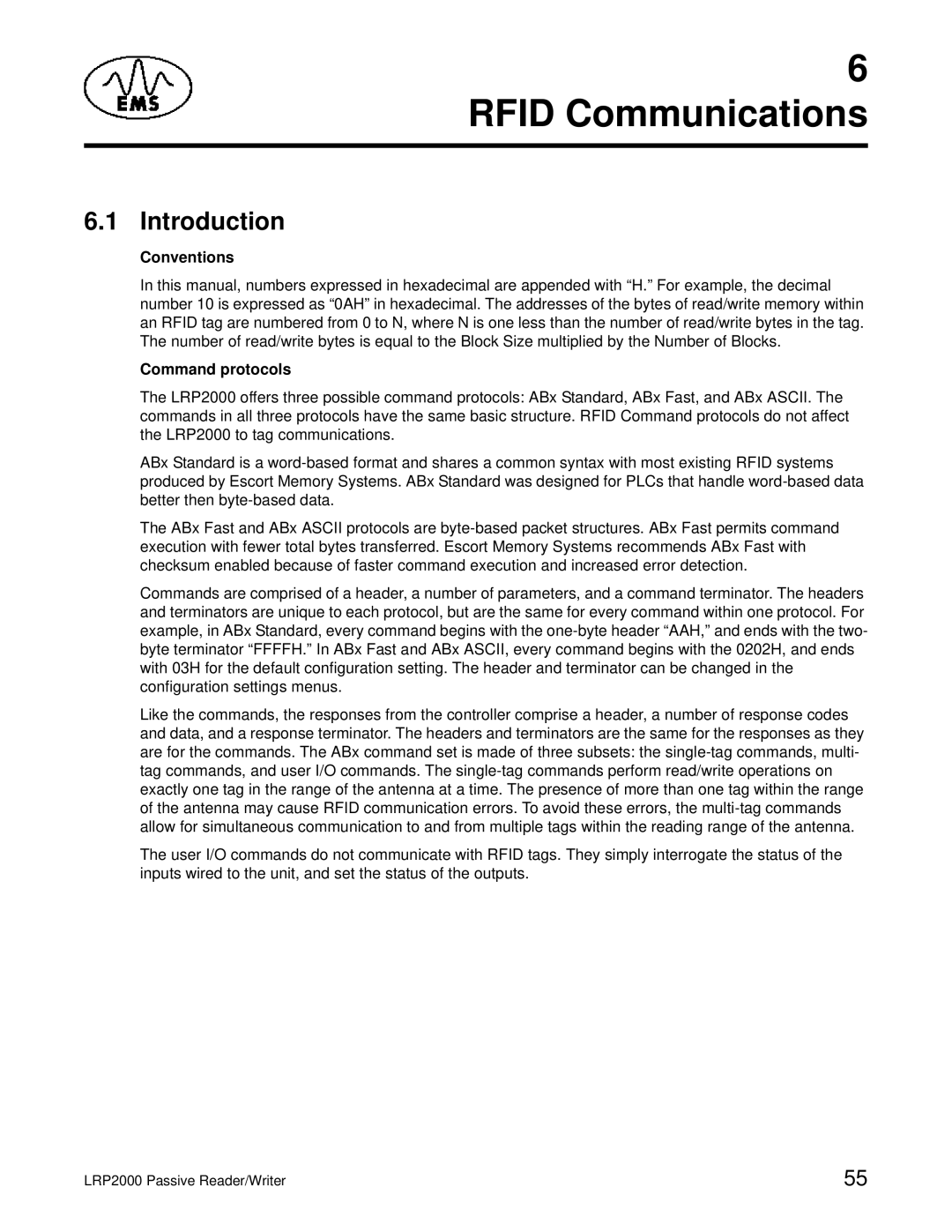
6 RFID Communications
6.1 Introduction
Conventions
In this manual, numbers expressed in hexadecimal are appended with “H.” For example, the decimal number 10 is expressed as “0AH” in hexadecimal. The addresses of the bytes of read/write memory within an RFID tag are numbered from 0 to N, where N is one less than the number of read/write bytes in the tag. The number of read/write bytes is equal to the Block Size multiplied by the Number of Blocks.
Command protocols
The LRP2000 offers three possible command protocols: ABx Standard, ABx Fast, and ABx ASCII. The commands in all three protocols have the same basic structure. RFID Command protocols do not affect the LRP2000 to tag communications.
ABx Standard is a
The ABx Fast and ABx ASCII protocols are
Commands are comprised of a header, a number of parameters, and a command terminator. The headers and terminators are unique to each protocol, but are the same for every command within one protocol. For example, in ABx Standard, every command begins with the
Like the commands, the responses from the controller comprise a header, a number of response codes and data, and a response terminator. The headers and terminators are the same for the responses as they are for the commands. The ABx command set is made of three subsets: the
The user I/O commands do not communicate with RFID tags. They simply interrogate the status of the inputs wired to the unit, and set the status of the outputs.
LRP2000 Passive Reader/Writer | 55 |
